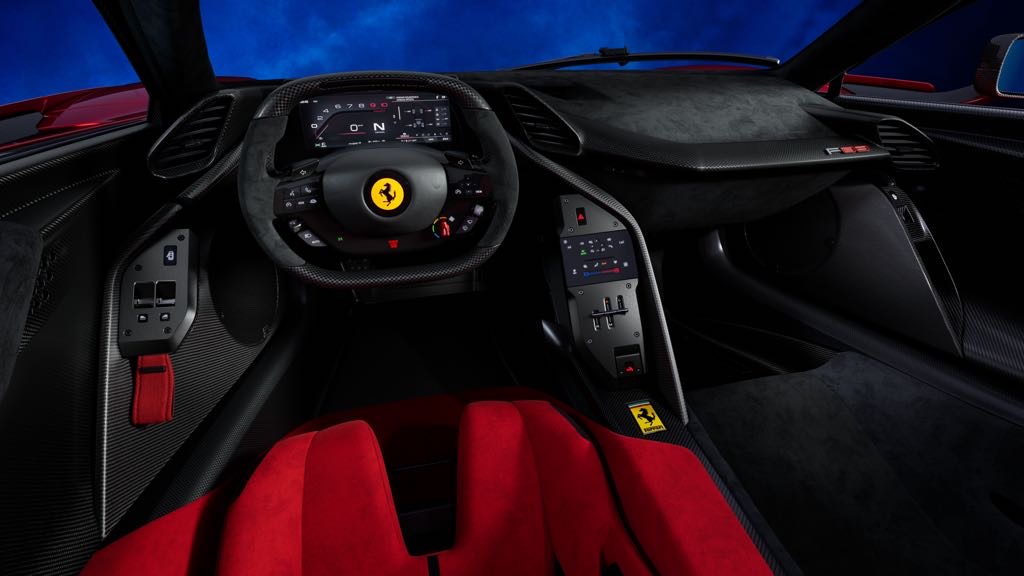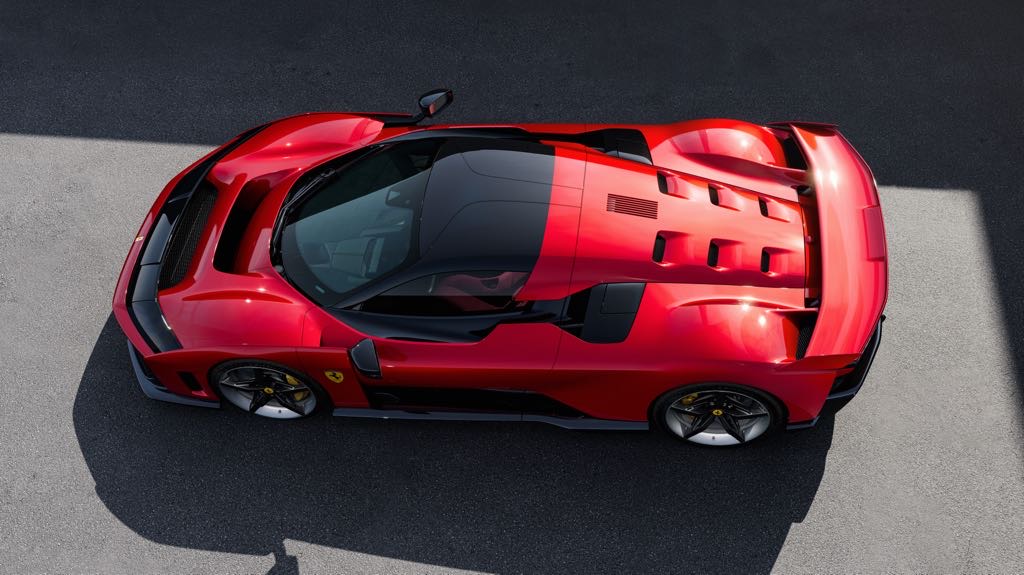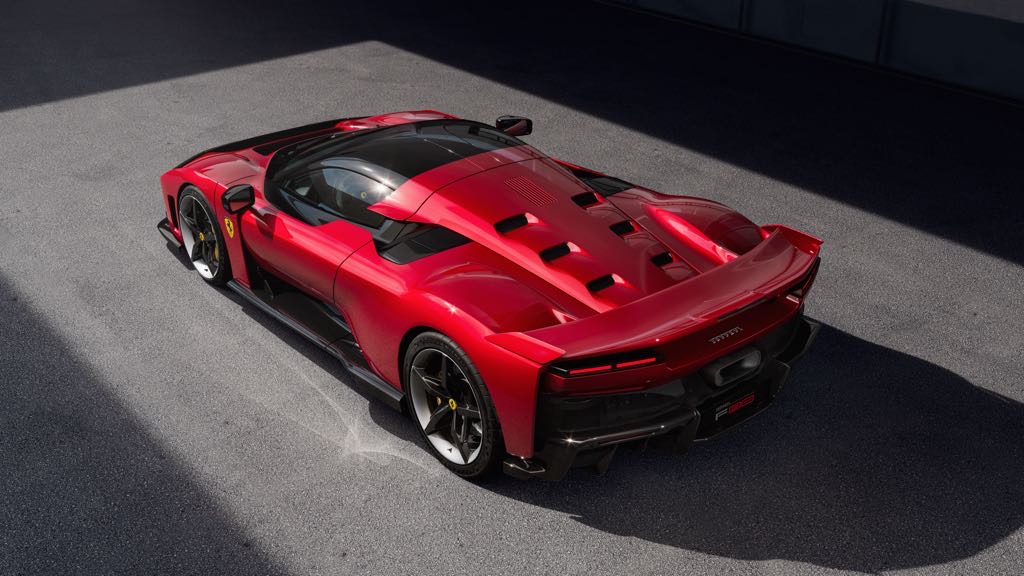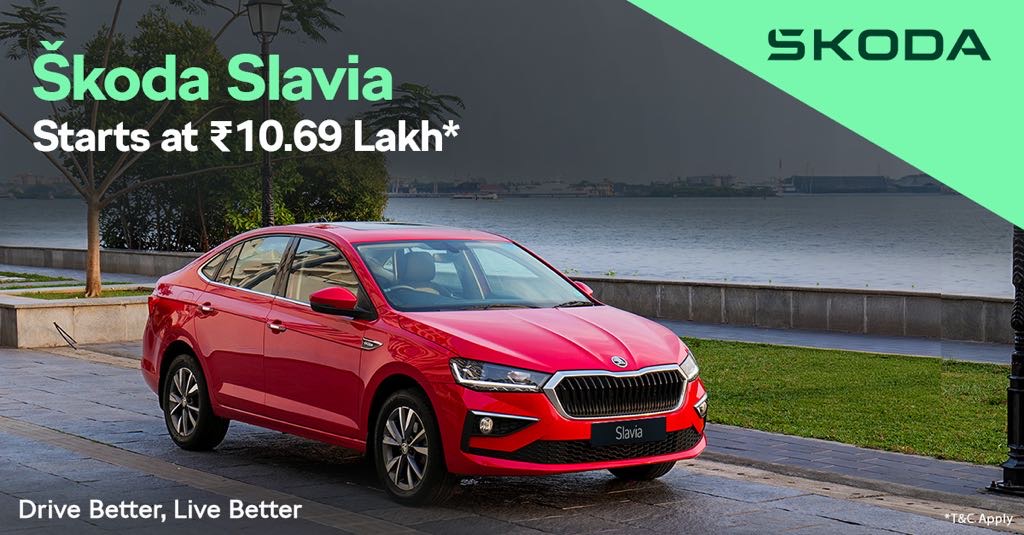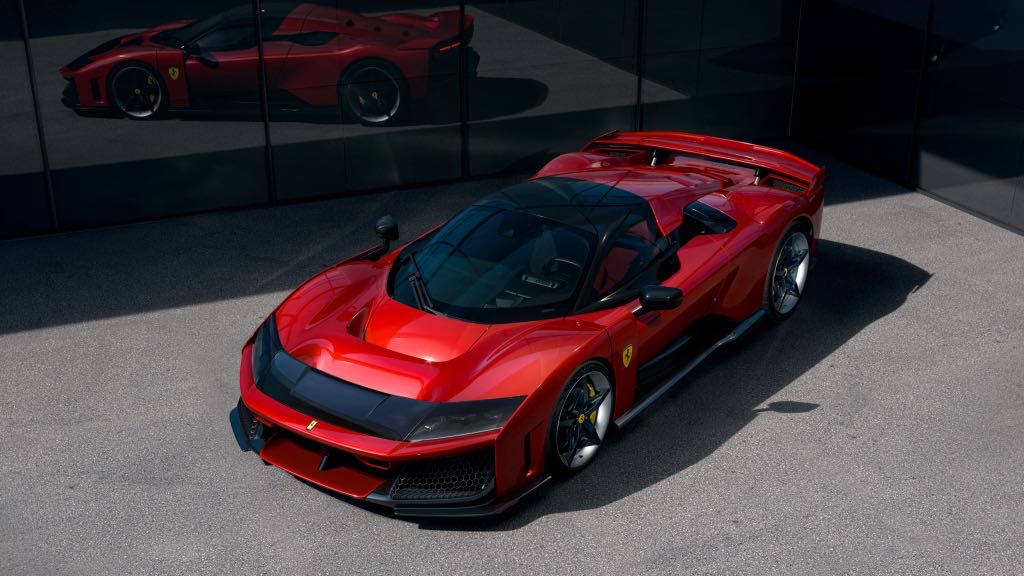
Ferrari F80 is the most powerful road-legal Ferrari ever made, 1200 HP!
Ferrari has unveiled the successor to its iconic LaFerrari hypercar, the Ferrari F80. This latest model marks a significant leap forward in the marque’s road car performance, delivering an astonishing 1200 HP via a hybrid V6 powertrain that integrates technology from Ferrari’s Le Mans and its Formula 1 cars. This makes the F80 the most powerful road-legal Ferrari ever produced.
Priced from £3 million (approximately Rs. 33 crores), the Ferrari F80 will be limited to just 799 units, all of which have already been sold. The car’s release comes just weeks after McLaren introduced its latest hypercar, the W1, setting up direct competition between two of the automotive world’s most prestigious brands.
Powertrain and Performance
At the heart of the F80 is Ferrari’s 3.0-litre twin-turbo V6 engine, capable of revving up to 9200 RPM. Significantly enhanced over the version found in the Ferrari 296 GTB, this engine alone produces 900 HP, making it the most powerful internal combustion engine the Italian manufacturer has ever developed. Complementing the V6 engine are three electric motors, two on the front axle and one on the rear. Together, these motors contribute an additional 300 HP, bringing the total output to 1200 HP and delivering power to all four wheels.
Ferrari has incorporated advanced technology, including energy recovery systems similar to those used in Formula 1 and new ‘E-turbos’ designed to reduce turbo lag and improve throttle response. The result is a hypercar capable of accelerating from 0-100 km/hr in 2.15 seconds and 0-200 km/hr in 5.75 seconds – faster than both the McLaren W1 and the Mercedes-AMG One.
Despite its hybrid nature, the F80 does not feature a pure electric mode. Instead, its 2.3kWh battery is used to provide a power boost and enable low-speed driving in urban settings. Ferrari has also introduced a ‘Boost Optimisation’ function, which allows drivers to record track data on a sighting lap and use that information to optimise power delivery on subsequent laps.
Aerodynamics and Chassis Design
The aerodynamics of the Ferrari F80 are heavily influenced by Ferrari’s experience in Formula 1 and endurance racing. A prominent ‘S-Duct’ channels air over the cabin towards the rear wing, which is equipped with active aerodynamics, adjusting its height and angle to optimise downforce or minimise drag as needed. Combined with a large rear diffuser, these features allow the F80 to generate up to 1000 kg of downforce at 250 km/hr.
In terms of dimensions, the F80 measures 4840 mm in length, 2060 mm in width and 1130 mm in height, making it slightly larger than McLaren’s W1. Despite weighing 125 kg more than its rival, Ferrari has focused on using lightweight materials such as carbon fibre, titanium and aluminium to keep the car’s overall weight to 1525 kg. The vehicle’s active suspension system is powered by four 48V actuators and Ferrari has employed 3D printing technology in creating parts of the suspension setup.
Interior and Design Philosophy
The design of the Ferrari F80, led by Flavio Manzoni, takes inspiration from past Ferrari models like the F40 and the Enzo but also incorporates futuristic elements. The car’s overall aesthetic is said to be inspired by spaceships and science fiction, giving it a modern and aggressive look. The front fascia, with its large black grille and a small lip at the top, channels air efficiently over the cabin towards the rear.
Inside, the F80 features an asymmetrical cabin layout that prioritises the driver’s experience. Despite initial discussions about making the F80 a single-seater, Ferrari opted for a more conventional setup. The steering wheel and centre console include mostly physical controls, which Ferrari claims are more intuitive and user-friendly during high-performance driving.
